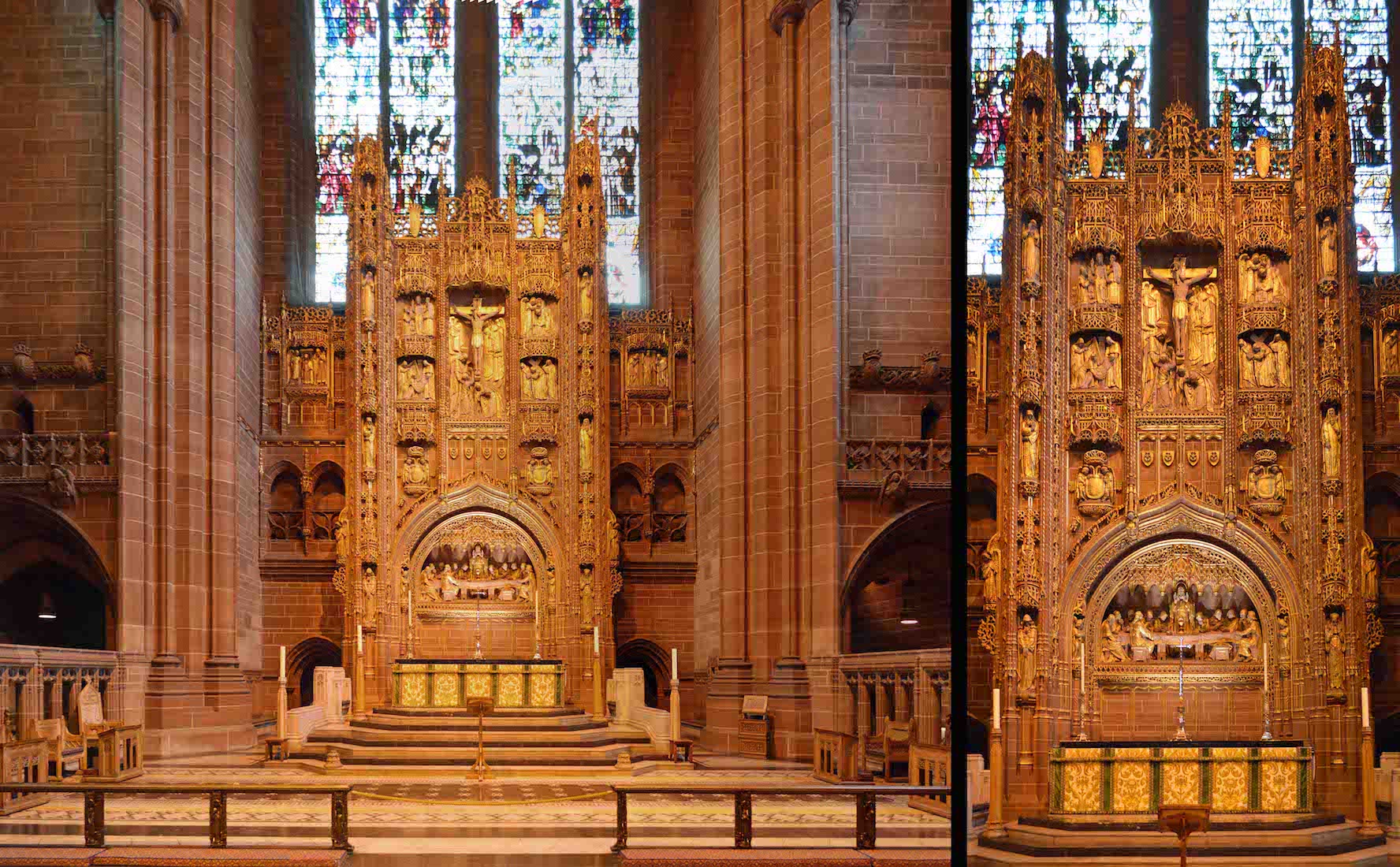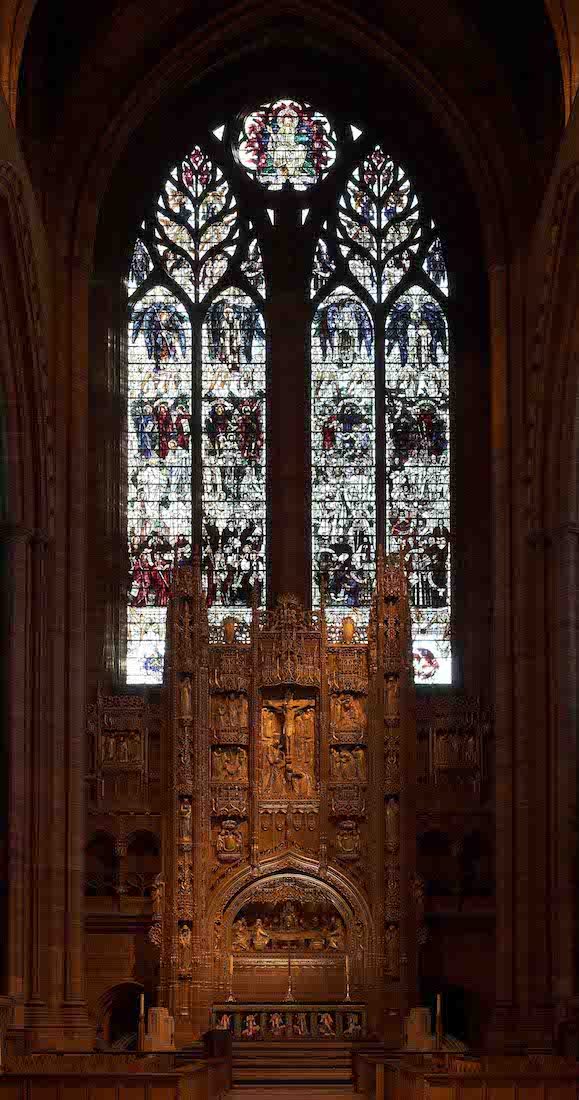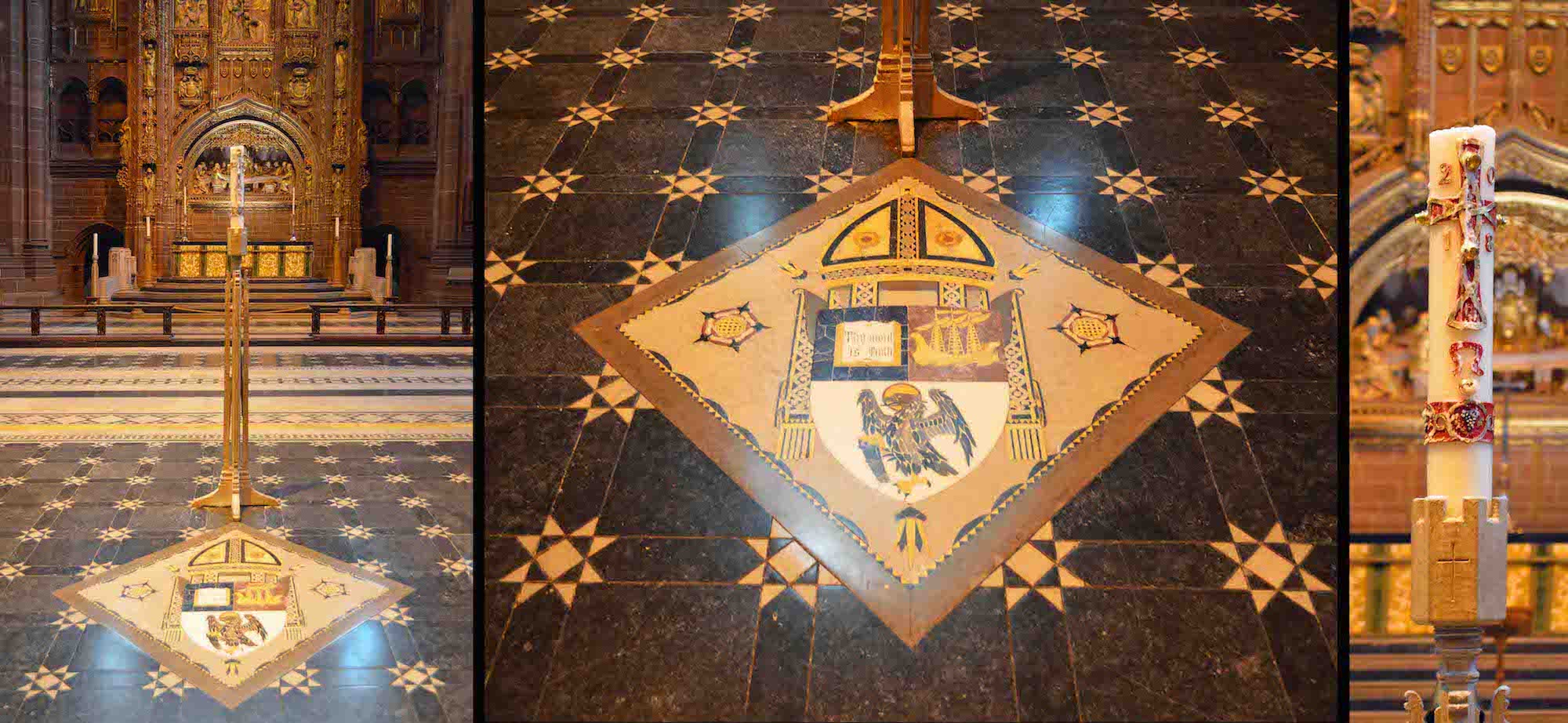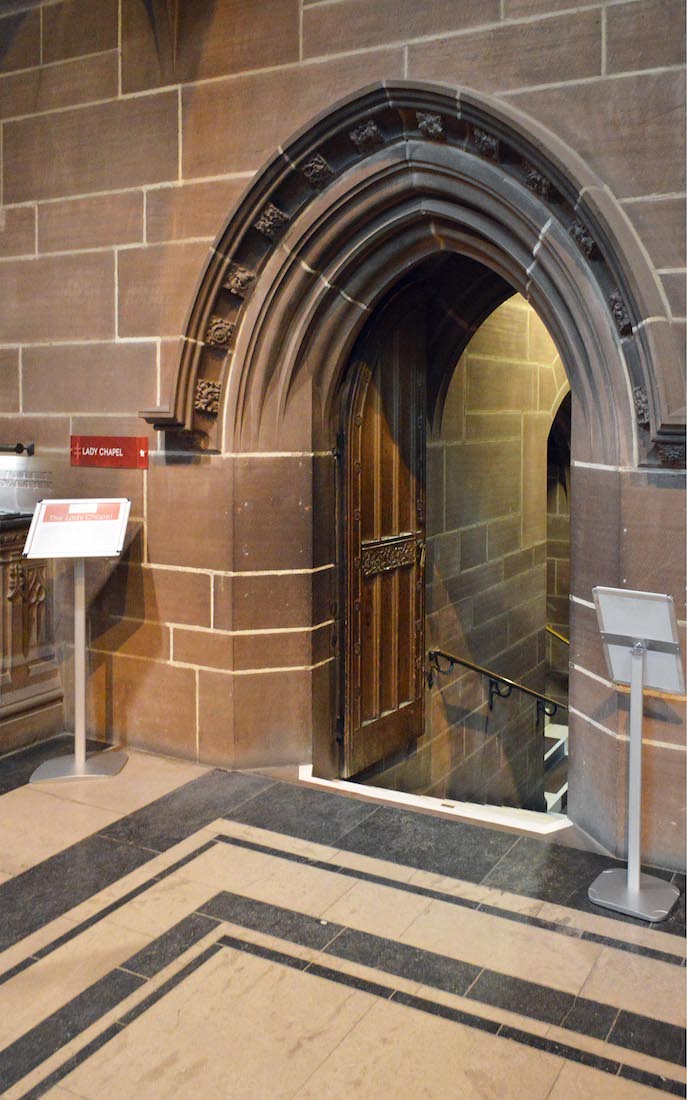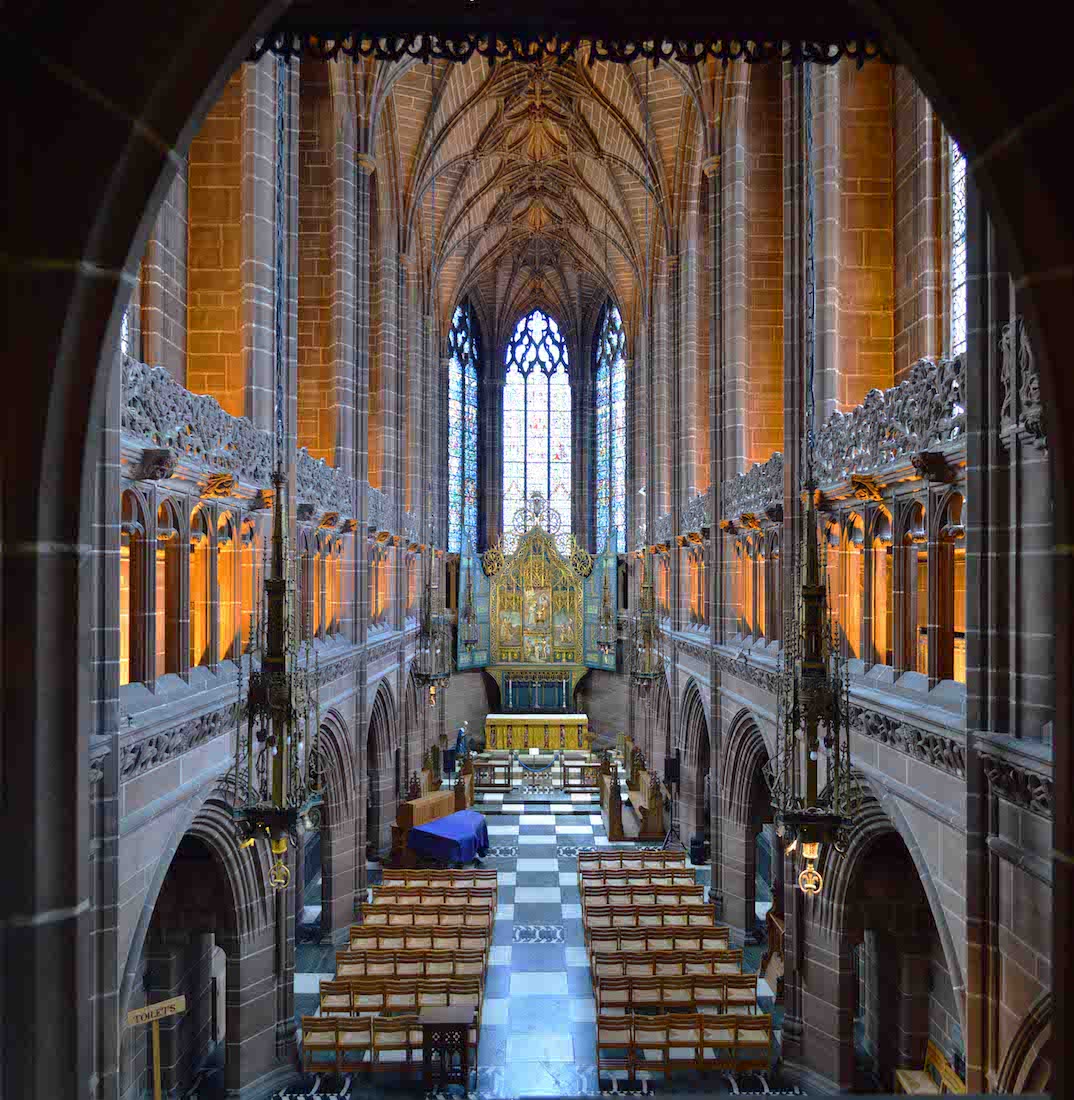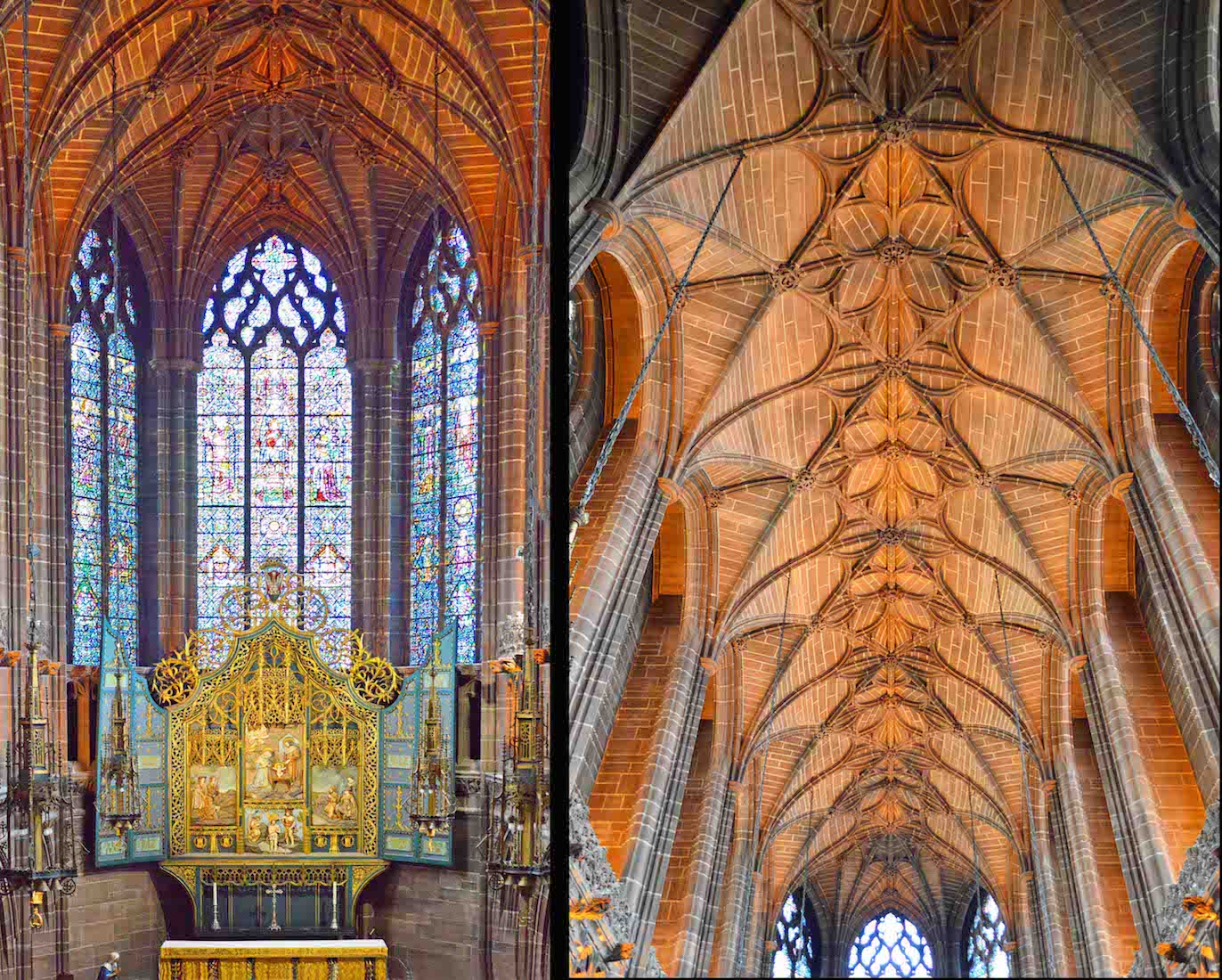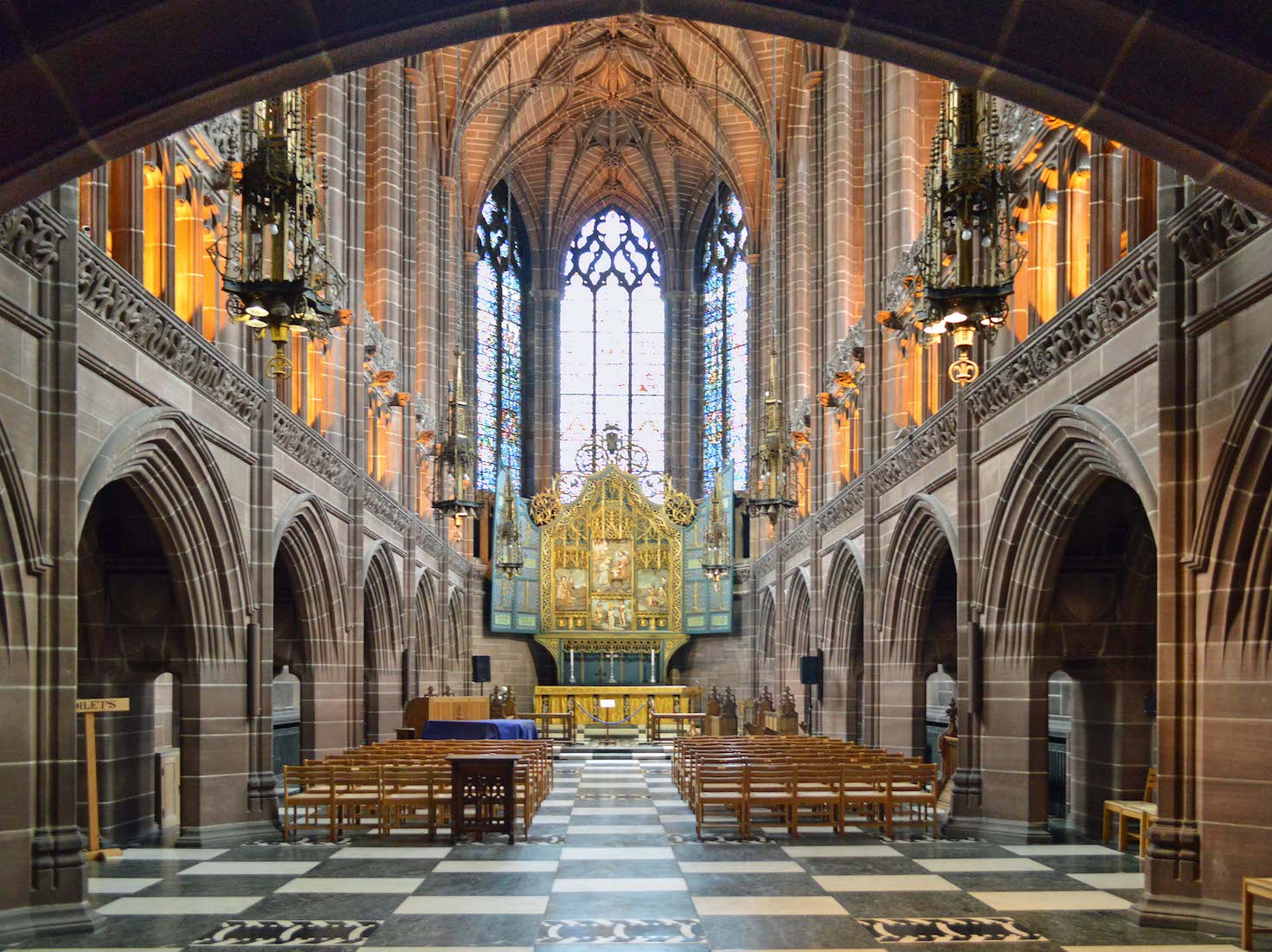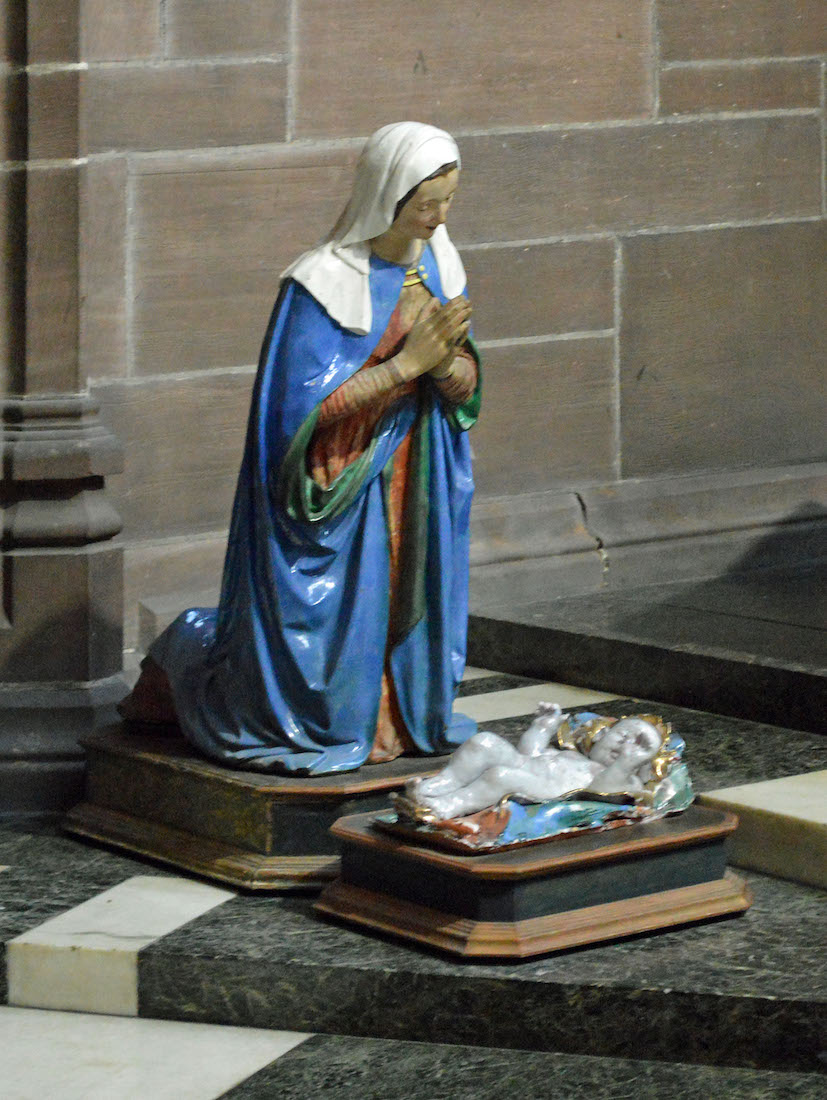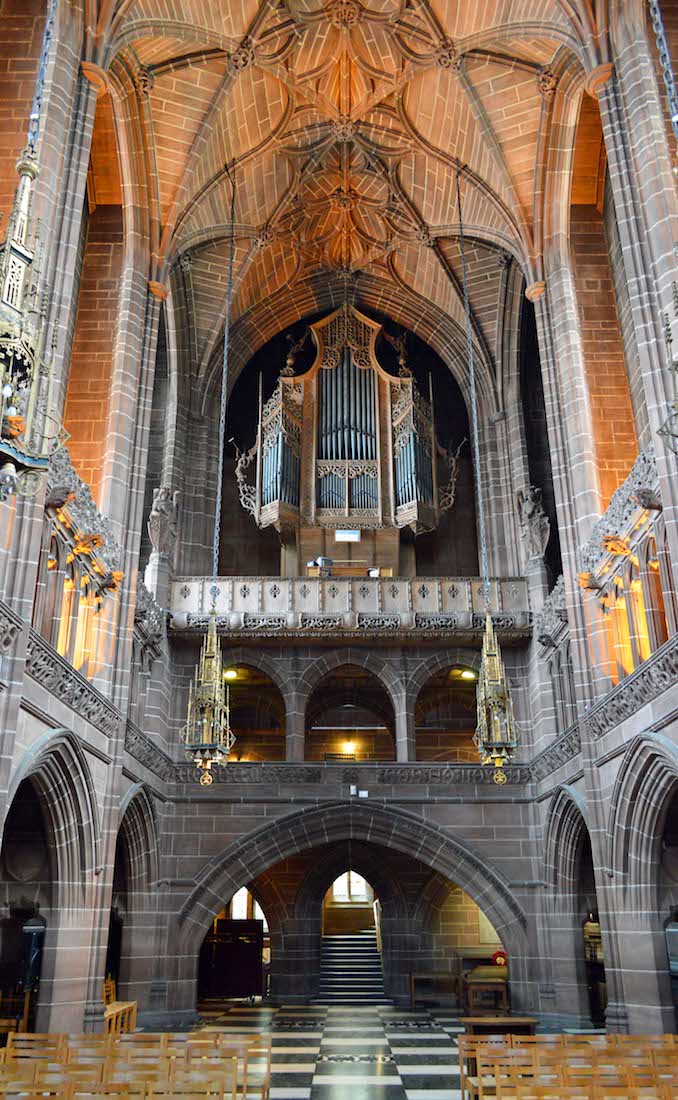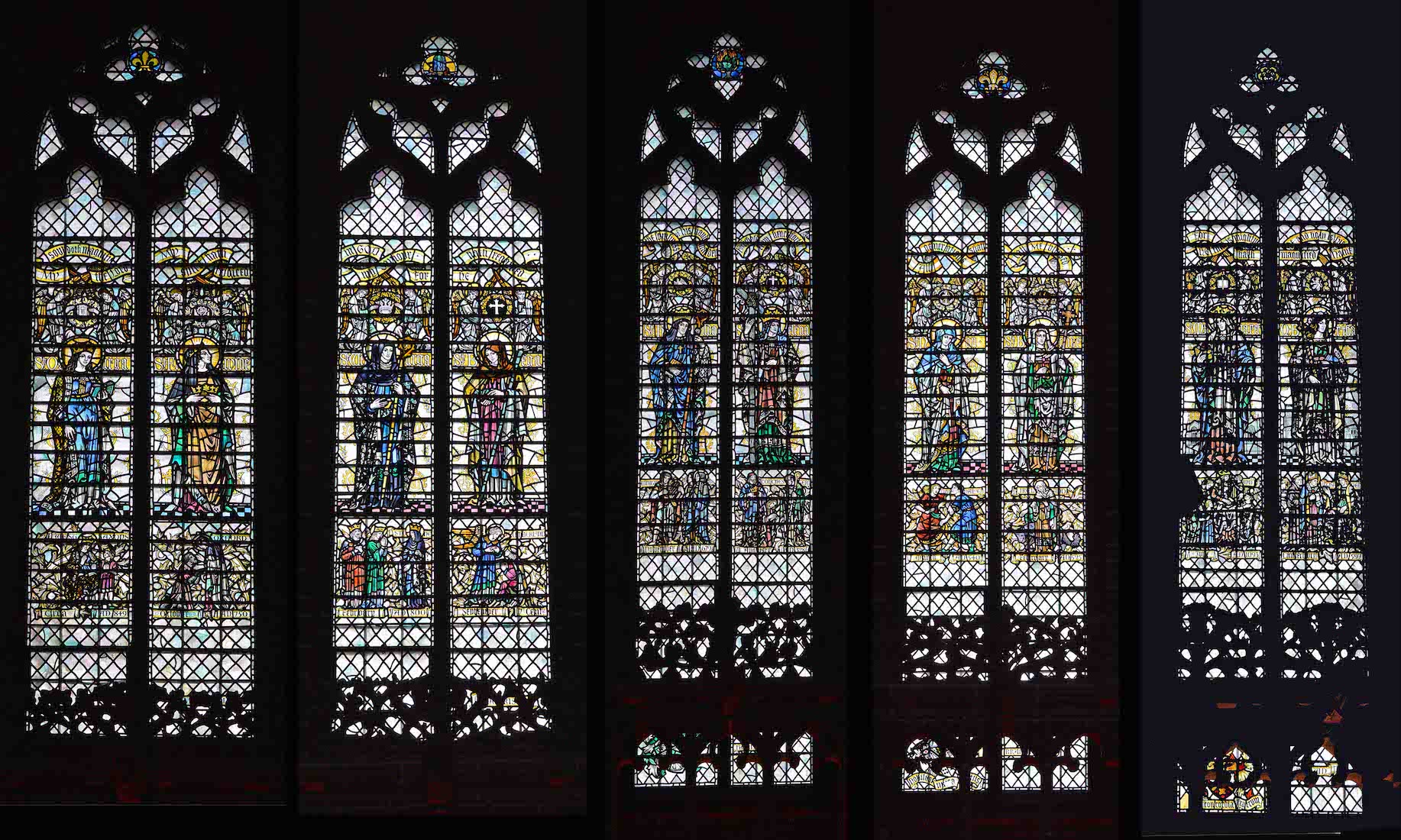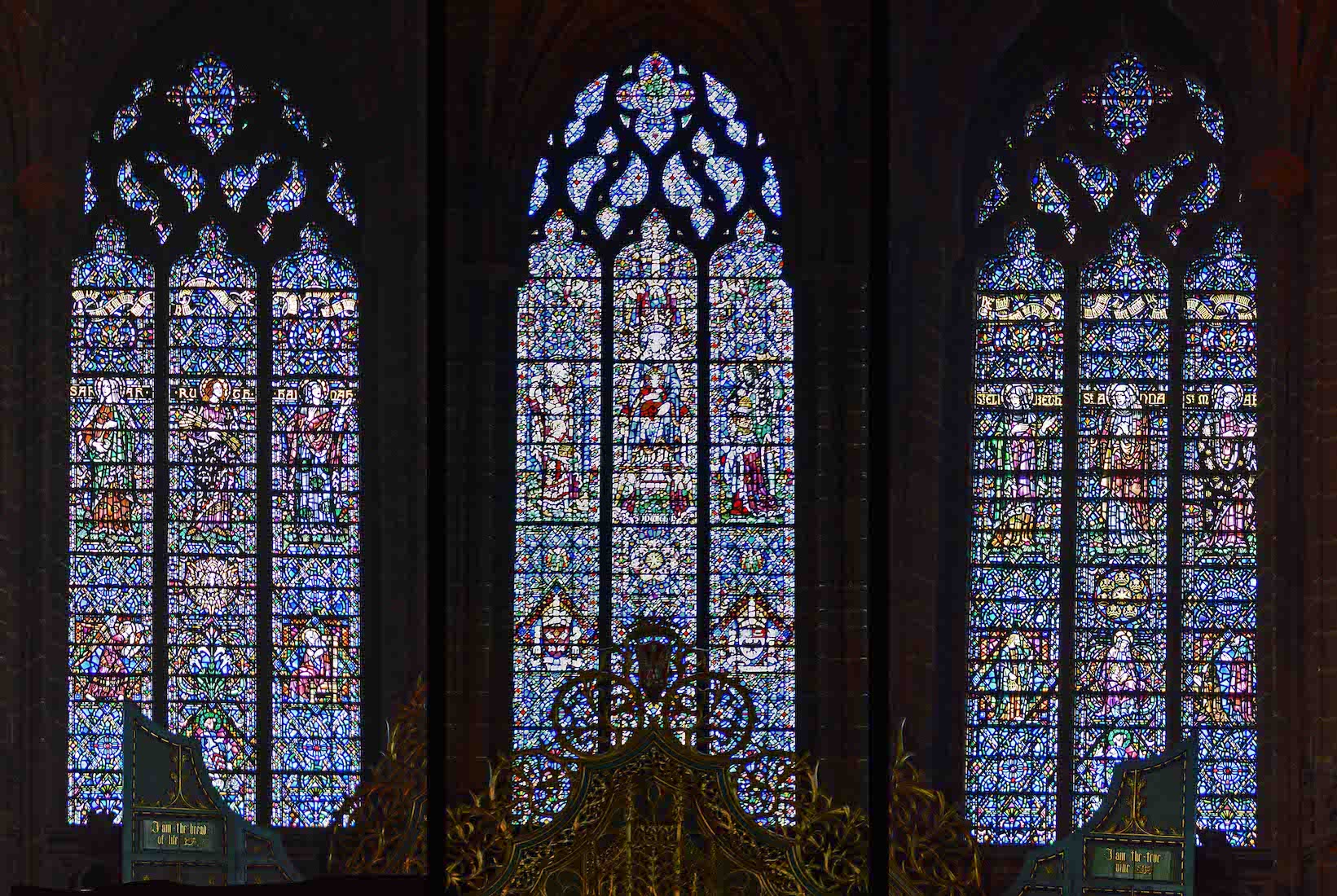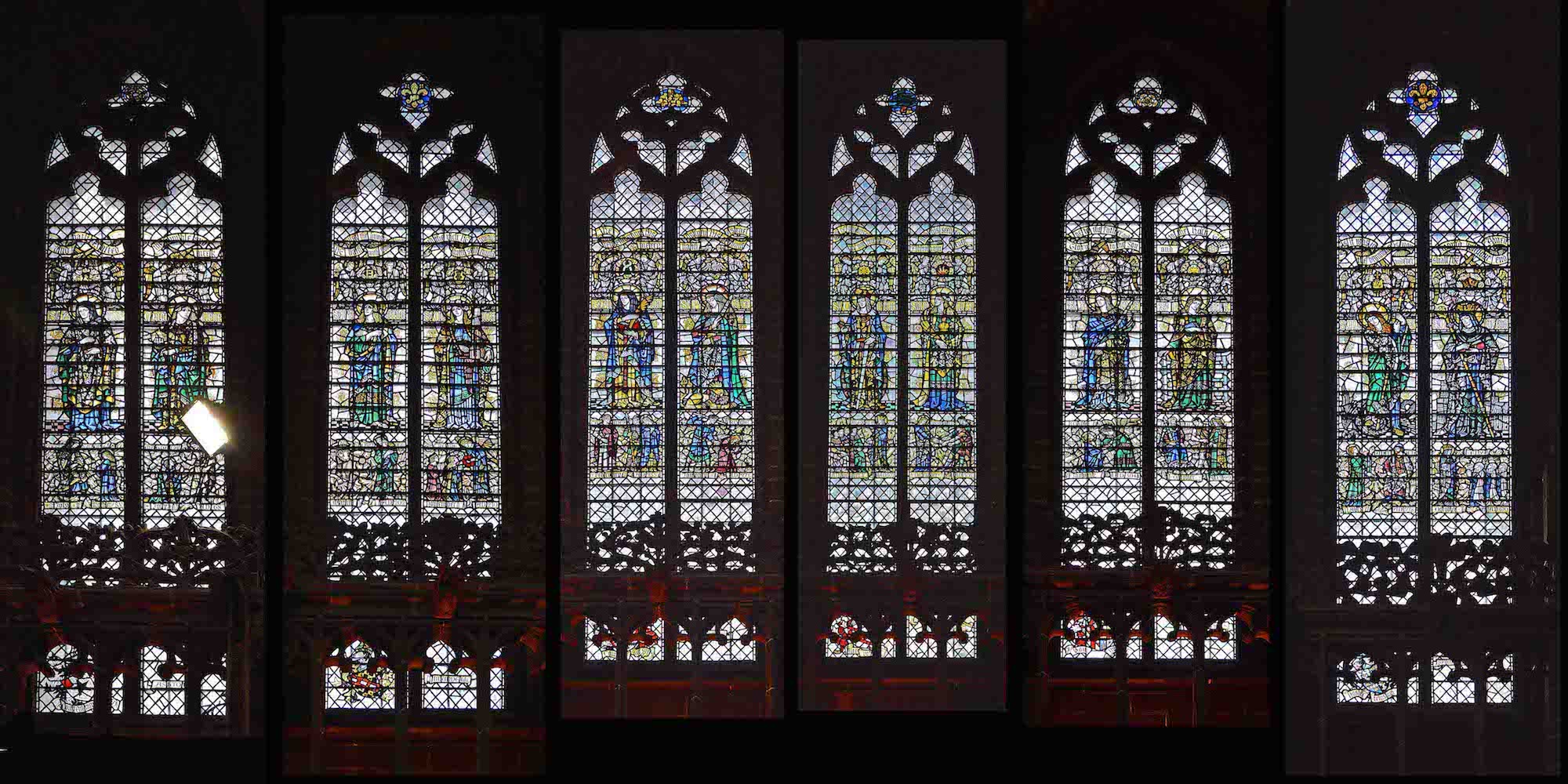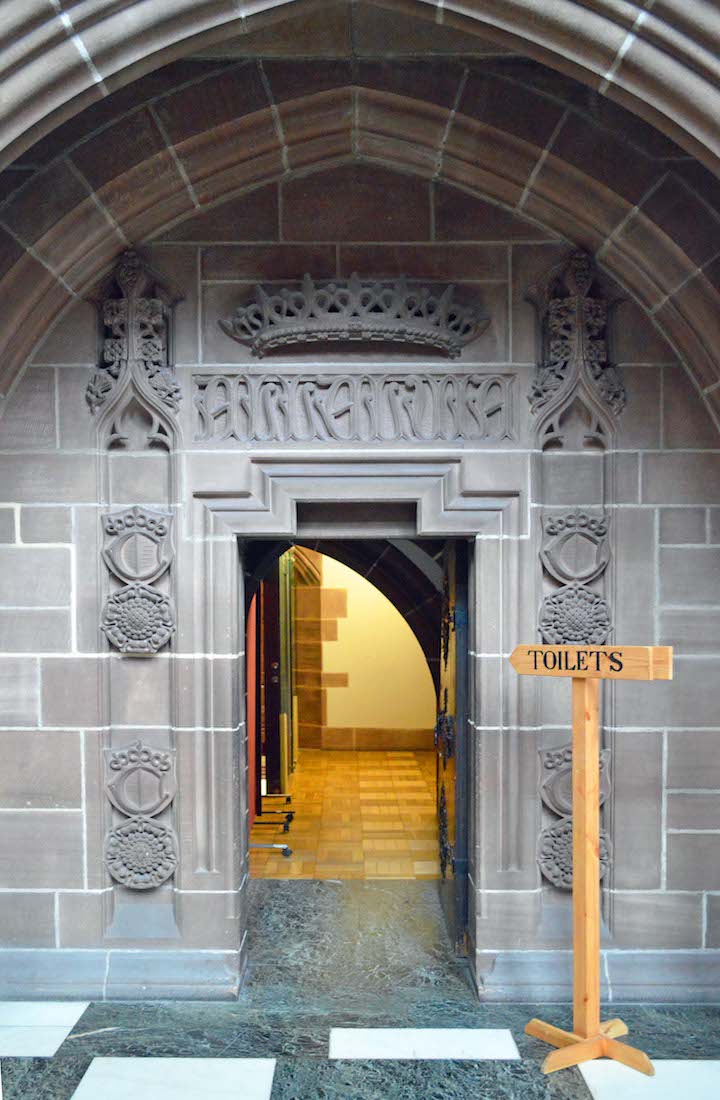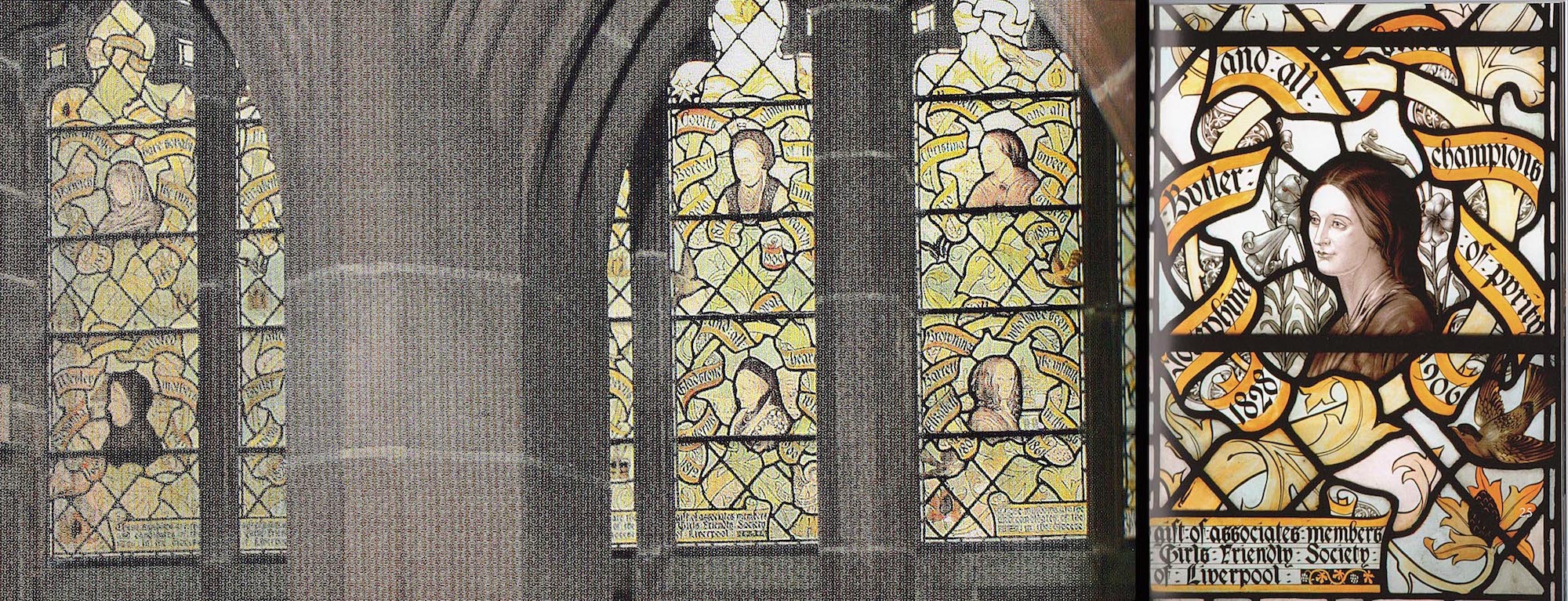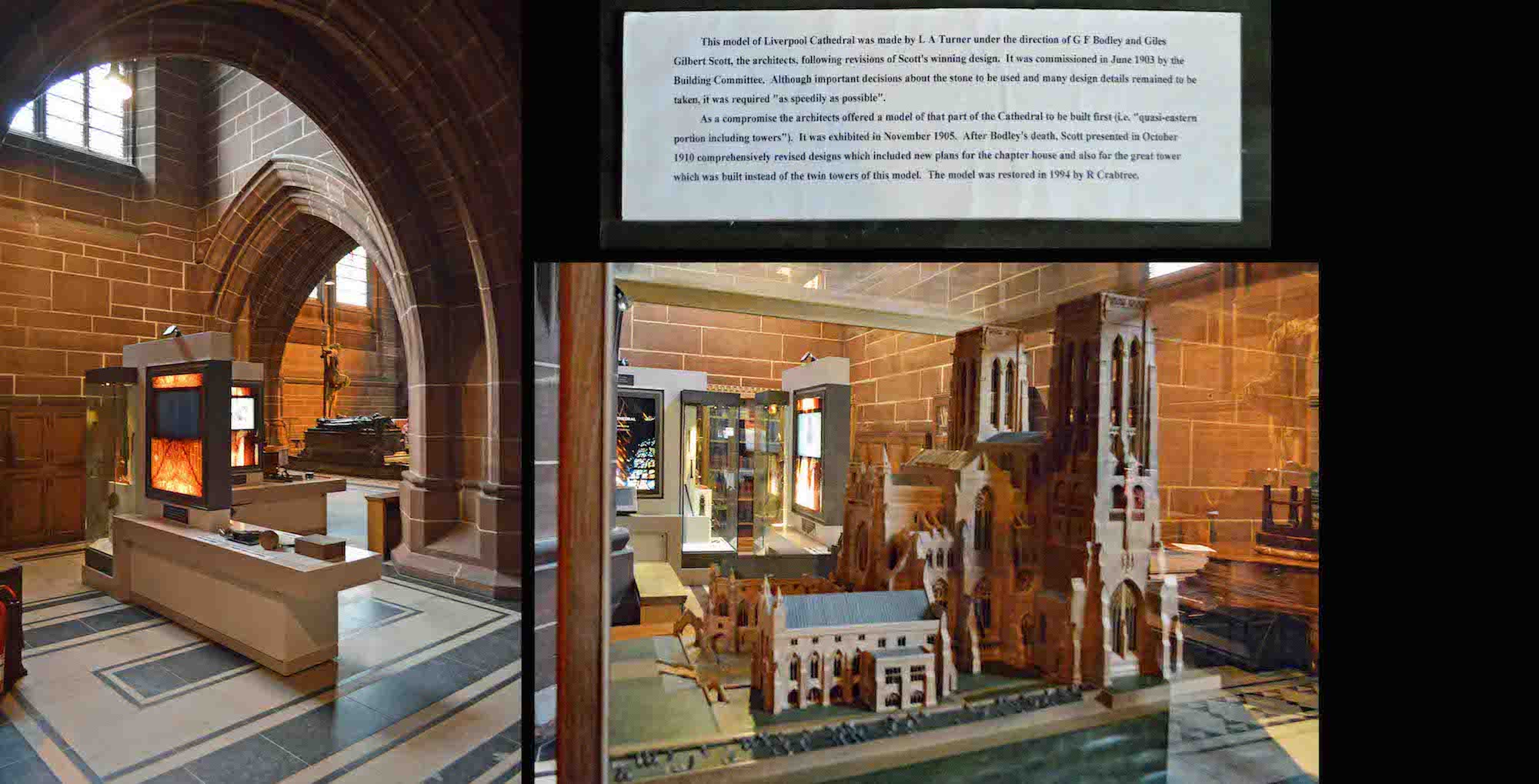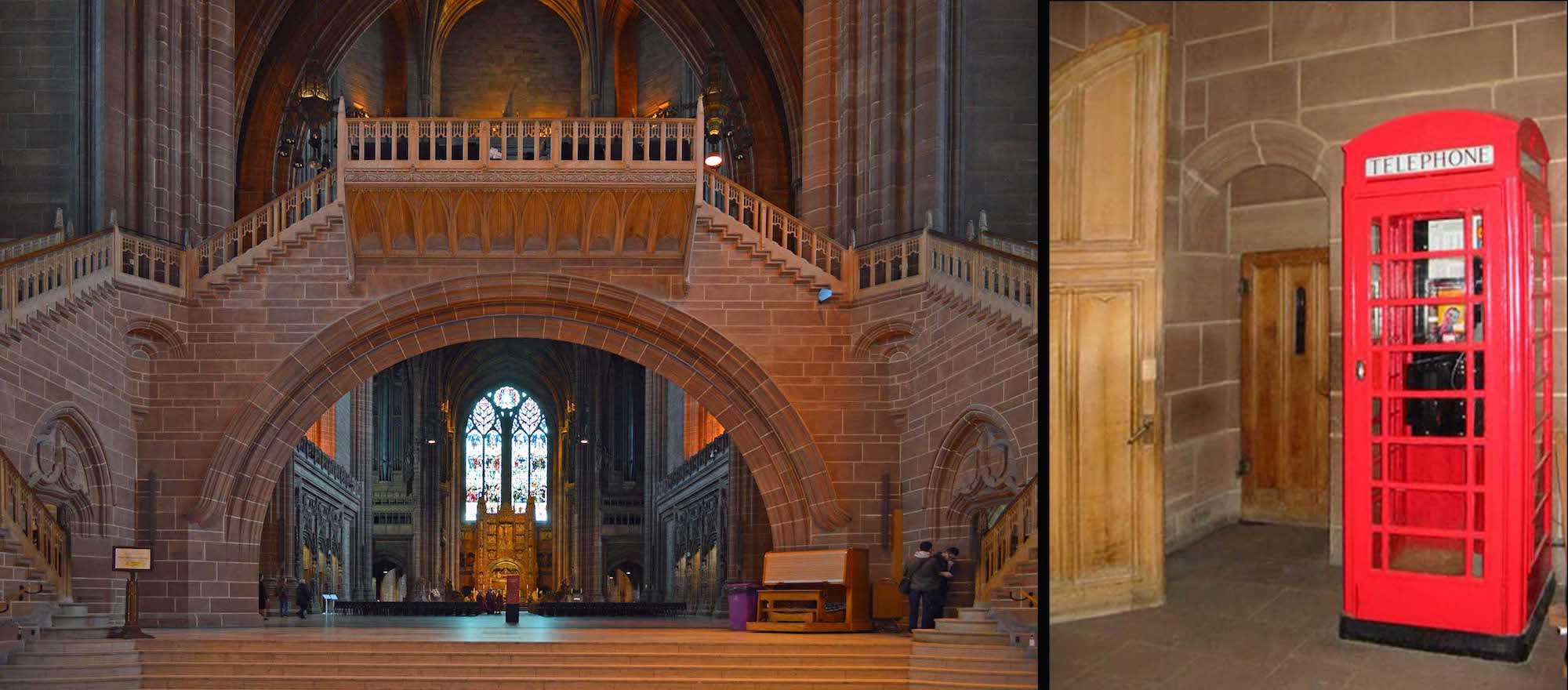
As before, there is an angel at each end. And again at each end a recessed gallery with two angels facing an open book. The words of the books this time are: ‘I am the Good Shepherd’ and ‘I am the Light of the World’. The painting is ‘The Prodigal Son’ (1996) by Christopher Le Brun. It is the gift of the Jerusalem Trust. PLAN
82. ARCH, CATHEDRA
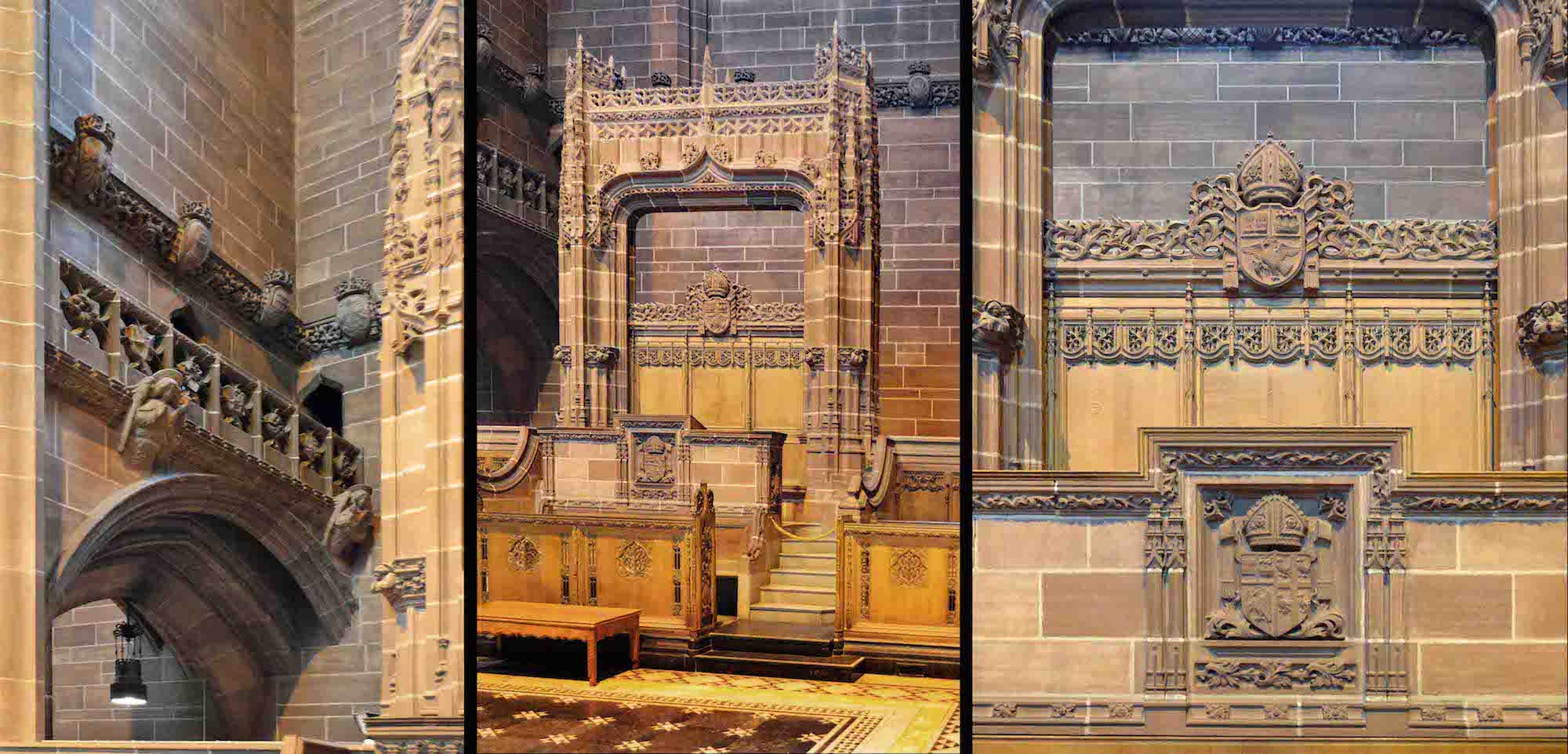
The Liverpool Diocese is overseen by a Bishop (presently Paul Bayes), and the Bishop has a special seat which indicates that he is associated with one of the churches of the Diocese. In Latin the word for seat or throne is ‘cathedra’. So this is the seat, and it is from the Latin that this church takes on the title of ‘cathedral’. Above the seat is the coat of arms of the Liverpool Diocese featuring an eagle, a book inscribed with ‘Thy Word is Truth’, and an old sailing ship.
83. HIGH ALTAR
The reredos (screen behind the high altar) is richly carved from sandstone, embellished with gold leaf. The lower panel illustrates the Last Supper and the other central panel depicts the Crucifixion with further scenes of Christ’s Passion to each side. The outer panels show the Nativity and Resurrection. The little arches on either side of the reredos are called the nostrils: the choir enters through these at the beginning of each service.
84. REREDOS DETAIL
These photos show details of the Last Supper. I am puzzled by the treatment of the faces. The pairs of angels above the Last Supper scene bring to mind the crests we saw above the choir seating.
85. EAST ‘TE DEUM’ WINDOW
The East window, designed by Brown, dominates the east end of the cathedral, rising above the reredos, and is based on the theme of the Te Deum Laudamus. At the top of the window is the risen Christ, and around and below are members of the heavenly choir. Under this are four lancet windows, each representing one of the communities praising God. From left: • ‘the company of the apostles’; • ‘the goodly fellowship of the apostles’; • ‘the noble army of martyrs’; • ‘the holy church throughout all the world’. [Photo Credit: Wikipedia]
86. PASCHAL CANDLE
The Paschal candle stands before the altar and close to a colourful coat of arms inserted in the floor tiling. We saw this earlier as the coat of arms of the Liverpool Anglican Diocese. The candle speaks of Christ as being the Light of the World, and is lit especially around Easter time.
88. GALLERY VIEW OF LADY CHAPEL
We first climb the few steps to the gallery overlooking the Lady Chapel. The Chapel was the first part of the Cathedral consecrated for worship. It is perhaps the most beautiful part of the Cathedral, with its own organ, much admired lantern lights, its own private entrance, and some of the most beautiful stained glass in the cathedral. Our eyes are drawn to the praying figure at left near the altar.
89. CHAPEL EAST END, VAULTING
There is much to observe in this Chapel including the altar with its triptych, and the magnificent vaulting. We have been somewhat over-awed by the sheer size of this Cathedral, and that impression is carried over here: this is a very large Lady Chapel.
90. LADY CHAPEL
We leave the gallery and descend to the floor level of the Chapel. Ornately carved lettering runs around the walls, with the verse from St. John’s Gospel (ch 3:16): ‘God so loved the world that He gave His only begotten Son that whosoever believeth in Him should not perish but have everlasting life. For God sent not His Son into the world to condemn the world, but that the world through Him might be saved.’
91. KNEELING MADONNA AND CHRIST CHILD
Near the altar, a 15th century statue in wood of the Kneeling Madonna by Giovanni Della Robbia is complemented by a figure of the Christ Child. Giovanni Della Robbia worked in Italy in the late 15th and early 16th centuries, and the Madonna has been attributed to the school of this artist. In 2002, the Cathedral Chapter commissioned the artist, Don McKinlay, to create a Christ-child to be set alongside the Madonna. The commission was given in memory of Dean Derrick Walters who died in 2000.
92. LADY CHAPEL TRIPTYCH PANEL
Above the altar at the East end of the Chapel is a triptych depicting the Holy Family at the time of the Nativity, and the baptism of Jesus. There is much decoration and gold leaf! The altar below is simple with a cross and candles. In front is a rich golden hanging with colourful cloth insert strips.
93. WEST LADY CHAPEL
If we stand near the altar and look back, we can see the gallery and the Chapel organ pipes above. This organ was built by Henry Willis and Sons, and is regularly used for worship, weddings and funeral services.
94. LADY CHAPEL NORTH WINDOWS
There was a competition in 1907 to design the Lady Chapel windows, which was won by James Powell and Sons, who commissioned J. W. Brown as designer. Brown had worked for Powell’s until 1886 and then worked freelance, but from 1891 he was ‘the firm’s preferred designer for prestigious projects’. As the chapel is dedicated to St Mary, the windows are based on the role that women have played in the history of Christianity. Running through all the windows is a scroll containing the words of the Magnificat. On the North side are holy women from the British Isles.
95. LADY CHAPEL EAST WINDOWS
The central East window depicts the Virgin Mary holding the Child Jesus. The windows on either side continue the feminist theme with Sarah, Ruth and Hannah shown at left, and Saints Elizabeth, Anna and Mary at right.
96. LADY CHAPEL SOUTH WINDOWS
The windows on the South side show mainly saints commemorated in the Prayer Book. The Lady Chapel was damaged by bombing on 6 September 1940, and all the glass had to be replaced. The work was undertaken by James Hogan, who used simplified adaptations of the original designs. Following Hogan’s death in 1948 the work was continued by Carl Edwards; the resulting windows are much brighter than the originals.
97. LADY CHAPEL TOILET ENTRANCE
It is useful to know where the toilets are, but there are not many public conveniences which have a highly decorated Alleluia doorway!
98. NOBLE WOMEN WINDOWS
The windows at the rear of the chapel and on the staircase are known as the ‘Noble Women’ windows. They were donated by the Girls’ Friendly Society, and were designed by Brown. They depict women who have made major contributions to society, including Elizabeth Fry, Grace Darling, and Kitty Wilkinson. [Photo Credit: Cathedral]
99. SOUTHEAST TRANSEPT, DISPLAY AREA
Leaving the Lady Chapel, we make our way back towards the Southeast transept. Here there is a display area with several audio-visual presentations, and a model of an early design of the Cathedral. The early design looks quite different with twin Western towers in place of the central tower, and another chapel like the Lady Chapel, placed symmetrically at the East end.
100. DULVERTON BRIDGE AND TELEPHONE BOX
Time to climb the tower! The entrance is near the South end of the Dulverton Bridge. The telephone kiosk reminds us of Sir Giles Scott’s commission to design a kiosk to commemorate the Jubilee of King George V. The single, massive Vestey Tower, named after its benefactors, the Vestey family, replaced the original twin-tower concept for the Cathedral after going through several design iterations. It has a floor to top height of 101m (331ft). Open to the public most days, it is accessible by two consecutive lifts followed by 108 stairs.


